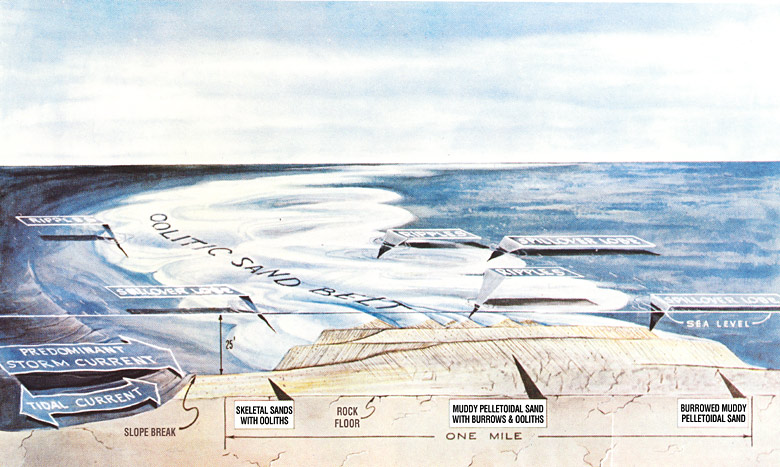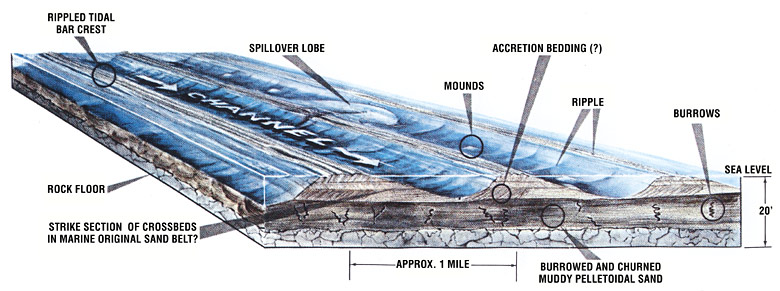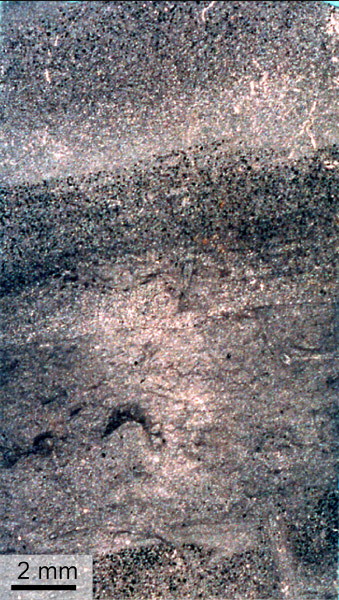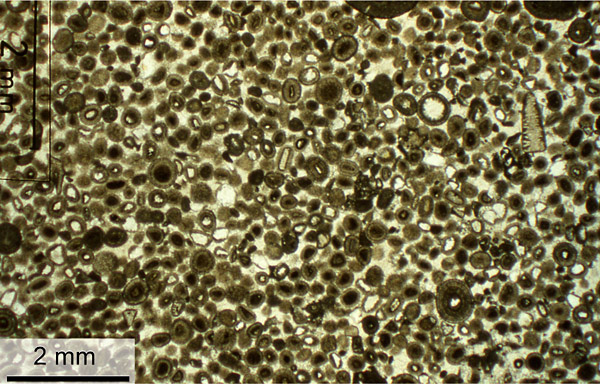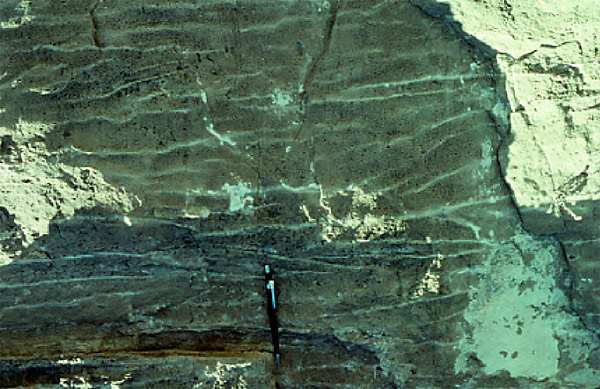|
|
|
Platform-Margin
Sand-Shoal Depositional Environments
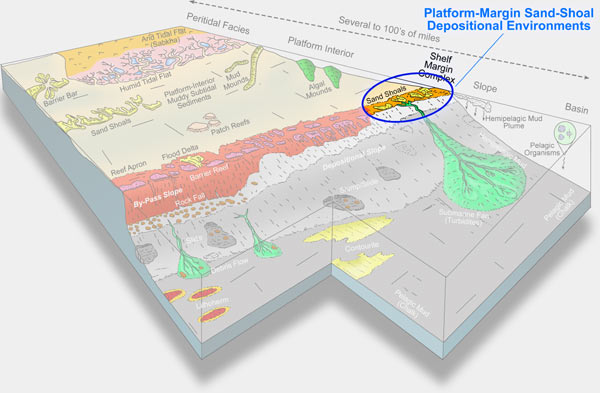
The
platform-margin environment is an area of strong wave, wind,
and tidal-current energy. If reefs do not form in this area,
sand shoals can form. These sand shoals are noticeable on
the leeward side of isolated platforms, such as on the Great
Bahama Bank. The shoals are commonly formed of ooids or
hardened peloids. The primary depositional structure is
well-developed crossbedding.
The
sand shoals will have tidal channels with associated flood-tidal
deltas. The landward side of the sand bodies can have
spillover lobes and shelfal-directed splays of sand produced
by intense storms (hurricanes or typhoons).
|
|
|




